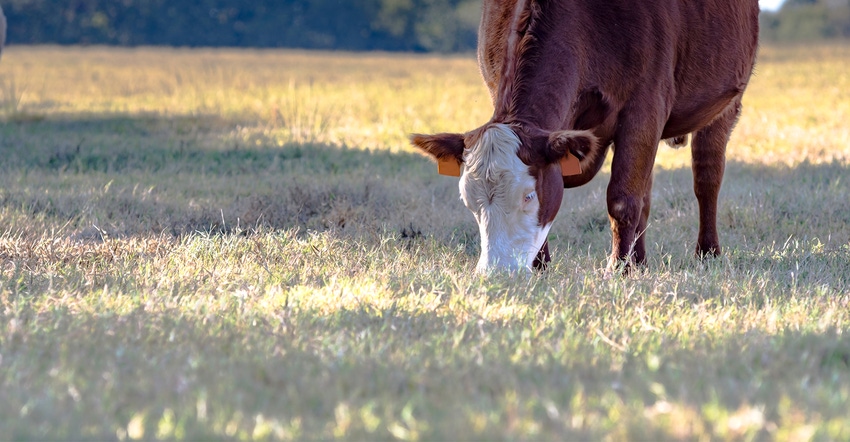
Cattle grazing below 2 inches in a fescue pasture can expect to ingest total ergovaline, a toxic alkaloid that costs $1 billion in U.S. livestock production losses from fescue toxicosis.
Sarah Kenyon, University of Missouri Extension regional agronomy specialist, is in the heart of fescue pasture country in south-central Missouri. She sees the impact of fescue toxicity on cattle every year.
Fescue toxicosis is the most severe forage-livestock disorder in Missouri, costing the state's beef industry $160 million each year, as toxic tall fescue reduces calf gains by 40%, milk production by 30% and pregnancy rate in spring calve herds by 45%. It has an even greater impact on dairy cattle and horses, Kenyon said.
Lethal forage
Fescue toxicosis is caused by a toxic fungus called “the endophyte,” because it resides in the tall fescue plant, she explained to a group of cattlemen gathered at the Missouri Livestock Symposium. The endophyte produces ergovaline, a compound known to be responsible for the symptoms found in livestock.
She began to wonder what stage of the plant during grazing has the highest levels of the toxic alkaloid ergovaline, and if changing grazing recommendations could help minimize toxicosis? So, she set out to find the answer.
Clipping for answers
Kenyon selected a research plot near Alton in Oregon County that was 90% infected the endophyte that produces ergovaline.
She collected cuttings of fescue at two different times in April before boot and October before a killing frost. Kenyon clipped the plants at ground level. From there, she sectioned them off in 2-inch segments. Then she tested for ergovaline presence. The test was repeated for three years.
In each test, she found the highest level of ergovaline in the 0-2-inch segments. In each study, the 0-2-inch cutting held more than 250 ppb. “Toxic levels for cattle grazing,” she said.
Thresholds for toxicity to livestock vary from 100 to 600 parts per billion of ergovaline present. In Oregon farmers use 600 ppb, while those in Kentucky adhere to 350 ppb, Kenyon said. “Research in Missouri shows that threshold is 200 ppb.”
That number can skyrocket after a drought year, Kenyon warned. She found following the 2012 drought, readings of ergovaline topped 500 ppb.
Kenyon fears the same phenomenon is happening around the state this year after the drought. “The fescue standing today and earlier this fall contain very high concentrations of ergovaline,” she said.
Grazing solutions
A difficult growing season has livestock producers facing a limited hay supply. “The temptation to graze grass is there,” Kenyon said. But she wants farmers to “wait.”
Throughout winter the amount of ergovaline decreases to a point where it is considered nontoxic and can be foraged. However, with the length of this year’s drought and high levels already present, it may take until mid-January 2019 before it is safe to turn cattle back onto fescue pastures.
Farmers should practice some incremental alleviation strategies if grazing toxic tall fescue. Kenyon advised feeding a supplement this year.
Come spring, Kenyon said adding clover to the grass mix dilutes the amount of ergovaline being ingested during the vegetative stage of growth.
However, she added a sweeping warning. “Farmers need to avoid that bottom 2-inch section for grazing,” she said. “It is full of ergovaline. Anything above 2 inches is the safe area.”
About the Author(s)
You May Also Like






